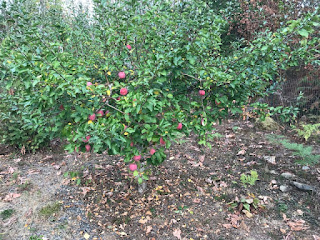 |
| Not a banshee, but a cool ghost! Thanks to Pixabay |
Spoiler alert for Wikipedia fans: the entire plot is online! But I’m glad I read the article. “Banshees” looks far too grisly for a lightweight like me (I pretty much can’t watch horror, gore, or violence of any kind). I’d rather consider the dark side of Halloween and All Hallow’s Eve from a safe distance.
Starting with the “Irish Halloween,” Samhain: it’s the
ancient Celtic festival signaling the beginning of winter. Pronounced “shahv-nah,” Samhain begins not with the winter solstice, but with the first of November—the turning
point into the dark time.
A note on pronunciation. I like to get this stuff right, and many of those in the know contend that Samhain is pronounced “sow-win.” But
one Irish Gaelic expert I discovered, whose native language is Irish, swears by
“shahv-nah.” So that’s what I’m going with. However, everyone seems to agree
that Samhain is most definitely NOT pronounced the way it looks, i.e., “Sam-hayne”!
Anyway, Samhain sounds way more grim than the modern Halloween
we know and love.
The night before Samhain, Hallow’s Eve, it was thought
spirits walked the earth. Apparently the ancient Celts would dress in
disguises, so any evil entities couldn’t recognize them. Communal bonfires were
also part of the holiday, thought to ward off evil spirits too. On the way home
from the bonfire, people would put a candle in a hollowed-out turnip to keep
ghosts away.
Interestingly, the Scots used not turnips but pumpkins, and
brought that tradition to the U.S.
Hallow’s Eve is more fully explained in the book Irish Cures, Mystic Charms and Superstitions, by Lady Wilde, mother of nineteenth-century author Oscar Wilde, forever famous for his creepy novella, The Portrait of Dorian Gray.
 |
| Terrific Irish Reading! |
Lady Wilde describes Samhain in a far more ominous way. The night
before, on Hallow’s Eve, it’s not safe for people to go near cemeteries, or
even leave home after dark, or ghosts will pursue them.
(There goes trick-or-treating!)
Also that night, the dead will rise from their graves and go
forth among those living. The dead can even have some kind of weird power over
the living, and if they wanted, can do harm to those who are alive. And worse,
“take revenge for any wrong done to them while they lived.”
At midnight, the dead will drink wine from fairy cups, and
in their mad joy to be “alive” again, “dance in their white shrouds to fairy
music” until daybreak.
Not my kind of Halloween at all.
Dia de Los Muertos, the Day of the Dead, sounds pretty
foreboding, and somewhat similar to the Celtic Hallow’s Eve. Yet it’s actually far more
cheerful than scary. As I understand this Mexican tradition, families visit the
graves of those who have passed, share treats together, and revisit joyful
memories. Now this is a tradition I can happily embrace.
As for more Halloween-themed reads, I highly recommend a chilling vampire novella, Carmilla,
by another nineteenth-century Irish author, Sheridan La Fanu—a story that
predates Bram Stroker’s Dracula by many years. You can find it, along with The Portrait of Dorian Gray, in The Oxford Book of Irish Literature.
And famed Irish poet W.B. Yeats compiled a quite
extraordinary volume or prose, Irish Folk
and Fairy Tales. Anything you want to know about banshees (the fairy spirits
of death and doom), pookas (a phantom fairy/goblin that can be a changeling and
a trickster), and the fairy race,
you’ll find it here!
However you celebrate, Happy Halloween!




